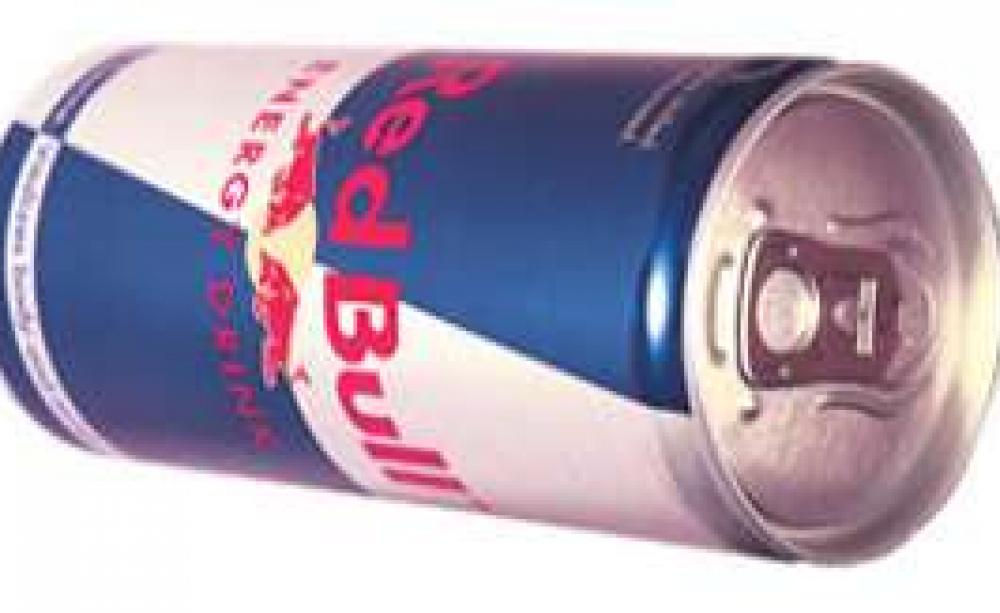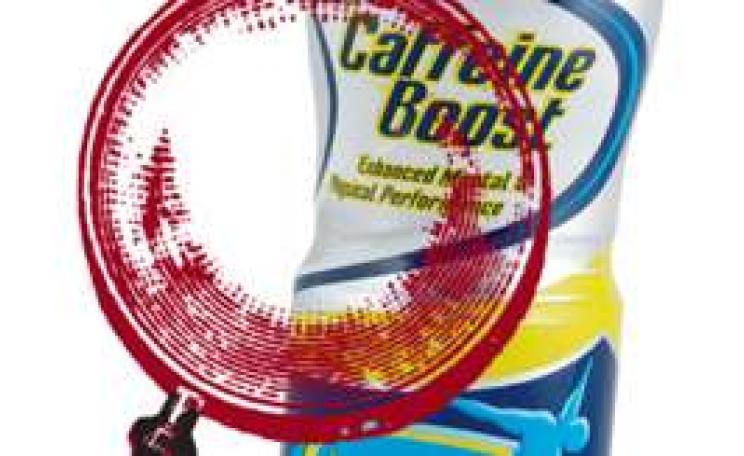The global energy crisis isn’t just a problem for cars. Humans across the globe are also suffering a chronic lack of vim and vigour – and wherever something is lacking, you can be sure there will be a product to fill the hole. Enter the energy drink. There are hundreds now on the global market, but only one, Red Bull, has consistently been a market leader.
Released onto an unsuspecting world in 1987, Red Bull created a whole new drinks category. The global ‘health’ and ‘energy’ drinks market is now the fastest-growing in the soft drinks world, doubling in size every year since it was first identified, to reach £1.5 billion in sales in 2006. Red Bull leads the way, with sales in the region of £1 billion last year.
‘Red Bull’s effects’, says the spin on the iconic blue and silver can, ‘are appreciated throughout the world by top athletes, busy professionals, active students and drivers on long journeys.’ Such claims for enhanced performance and increased concentration and reaction time are tenuous at best, culled from studies financed by Red Bull and involving small groups of human guinea pigs. Other similarly small independent studies show little or no such effect from this carbonated concoction.
No wings, but lots of spin
Despite the mystique and the sales slogan that ‘Red Bull gives you wings’, there is no magic to Red Bull. It may not literally live up to its nickname of ‘crack in a can’, but the mixture of sugar and caffeine can have a powerful and immediate effect.
The caffeine – 80mg per can, more than three times what’s in the same amount of Coke, but a similar amount to a cup of strong coffee – produces the trademark ‘buzz’. But sugar is the only ingredient in Red Bull that actually supplies ready ‘energy’ – and, being refined sugar, the ‘high’ is at best short and unsustainable and can, with continued consumption, depress immunity and wreak havoc with the body’s own energy-producing systems. To put Red Bull’s sugar content into perspective, the UK Food Standards Agency defines a high-sugar product as containing 10g per 100g. Red Bull contains 11.3g per 100g – a mighty 28g of simple carbohydrates per can.
Added to all this caffeine and sugar is the amino acid taurine (also known as 2-aminoethanesulfonic acid) and a rather mysterious carbohydrate called glucuronolactone, plus a range of B-vitamins (most in amounts too small to be considered therapeutic).
Taurine occurs naturally in meat and fish and is involved in several of the body’s metabolic processes. Omnivores on a good diet get all they need from food. There is no Recommended Daily Amount (RDA) for taurine and no authority has identified what the maximum safe daily intake is. But data from the Austrian National Food Authority suggests that the amount of taurine in just two cans of Red Bull is around five times that in an omnivorous diet. Similarly, intake of glucuronolactone (a metabolite, or breakdown product, of glucose) from two cans of Red Bull is in the order of 500 times what humans would normally get from food.
Although taurine has a calming effect on the central nervous system and lowers blood pressure, these effects need to be judged in relation to the caffeine in Red Bull, which has the exact opposite effect, and the potential havoc that combining these ingredients could play on the body. Each of the ingredients in Red Bull clearly has the capacity to produce its own adverse effects; but they can also interact. Given this, it is all the more amazing that there is no long-term research on how sugar, caffeine, taurine and glucuronolactone might interact in the body.
Implied health warnings
This has worried several health authorities around the world. Red Bull has recently been banned in France. A threatened ban in Turkey was narrowly averted when the company reformulated its product there, approximately halving its caffeine content. In Sweden, Denmark and Norway, Red Bull is a medicinal product; and in Japan, until recently, it was available only in pharmacies. In Canada, where it has only relatively recently been allowed on sale, the product carries the warnings: ‘Not recommended for children, pregnant or breastfeeding women, caffeine-sensitive persons or to be mixed with alcohol. Do not consume more than 500 ml per day.’
No warnings are put on the can in the UK except the one required by EU regulation, that all drinks (except tea and coffee) containing more than 150mg of caffeine per litre must state ‘high caffeine content’ on the label.
Part of the concern is that while Red Bull is marketed as a healthful drink, it doesn’t do anything to nourish the body or replenish it after physical exertion. In fact, because of the drink’s high caffeine content, it can be dehydrating. For a person engaged in heavy physical activity, adding Red Bull can be a lethal mixture. A small number of people have died from heart failure after combining Red Bull with physical exertion and, while no direct causation has been attributed to Red Bull, the dehydrating effect of the drink combined with exercise has been mooted as a major strain on the heart.
Combining Red Bull with alcohol is similarly risky. A recent study in Brazil found that college students didn’t perceive themselves to be as intoxicated as they really were. The study indicated that drinking alcohol and Red Bull together significantly reduces the perception of headache, weakness, dry mouth and impairment of motor coordination.
Bull for a frantic generation
Red Bull has always maintained that its product is entirely safe. The company points to the fact that its drink is widely consumed and no published research has ever shown any link between harmful effects and Red Bull – on its own or with alcohol. This is accurate, but not entirely truthful. No studies have been conducted that might properly examine the potential adverse effects of regularly drinking Red Bull. So while the company can say there are no data, gullible guzzlers should not assume that the absence of data justifies a claim of no adverse effects.
The prospect of energy in a can is seductive and such is the desire of so many people today to feel some sort of buzz, that each year, people in 100 countries guzzle around two billion cans of this sugary brew. It’s probably still most popular in clubs and bars, where tired dancers believe that mixing it with vodka will help them party the night away. But it can also be spotted in the hands of feckless teenagers and sleepy commuters on their way to school or work – a sad image far removed from the performance-enhanced athletes whom Red Bull regularly sponsors.
Red Bull may be a sales phenomenon but it is also a sad metaphor for a generation that is dead on its feet. In a society this energy-poor, maybe it’s time to stop reaching for the blue and silver can, and reach instead for a lifestyle that doesn’t demand us to be 24/7 automatons and that sustains, rather than drains, our essential vitality.
INGREDIENTS:
Sucrose, glucose, taurine, glucuronolactone, caffeine, flavourings, caramel
Effects:
Sucrose and glucose: Simple sugars. They are metabolised quickly by the body and produce a quick energy burst, followed by a deep energy deficit. High intake of sugar raises blood fat levels and leeches essential minerals such as copper, chromium and zinc from the body, leading to deficiency diseases, immune system impairment and even insulin resistance.
Taurine: Amino acid. No human studies have examined chronic toxicity associated with long-term intake of taurine. In animals it can produce a decrease in body weight (a sign of toxicity) and dehydration. In rats and guinea pigs, high intake is associated with liver dysfunction. Other evidence suggests that even relatively small doses of taurine can enhance the toxicity of industrial pollutants such as carbon tetrachloride.
Glucuronolactone: Carbohydrate. A naturally occurring substance manufactured by the human body. There is a paucity of research on its effects, and what there is has been conducted largely on rats. Here’s the problem. Rats metabolise this substance differently from humans and other mammals. No mammalian studies of glucuronolactone have been conducted, so its usefulness, and possible adverse effects, remain a mystery.
Caffeine: Stimulant. Increases heart rate and blood pressure and raises the level of harmful stress hormones in the bloodstream. In high doses, caffeine is dehydrating, addictive, and can reduce adrenal function and the body’s immune response. In pregnant women, high caffeine intake is associated with increased risk of miscarriage.
Flavourings: Adds flavour. Synthetic flavourings can be mixes of several industrial chemicals. They are essentially the same chemicals as perfumes and can thus be considered to be neurotoxins, allergens and potential carcinogens.
Caramel: Adds colour. Caramel produced by ammonia process is a common food colouring. This type of colouring has been associated with blood toxicity in rats. There is evidence that it may damage genes, slow growth, cause enlargement of the intestines and kidneys, destroy vitamin B and cause hyperactivity.
This article first appeared in the Ecologist May 2007







